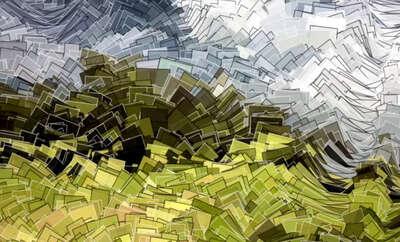

- Exclusive offers
- Inspiring new releases
- Personal invitations to Art Events

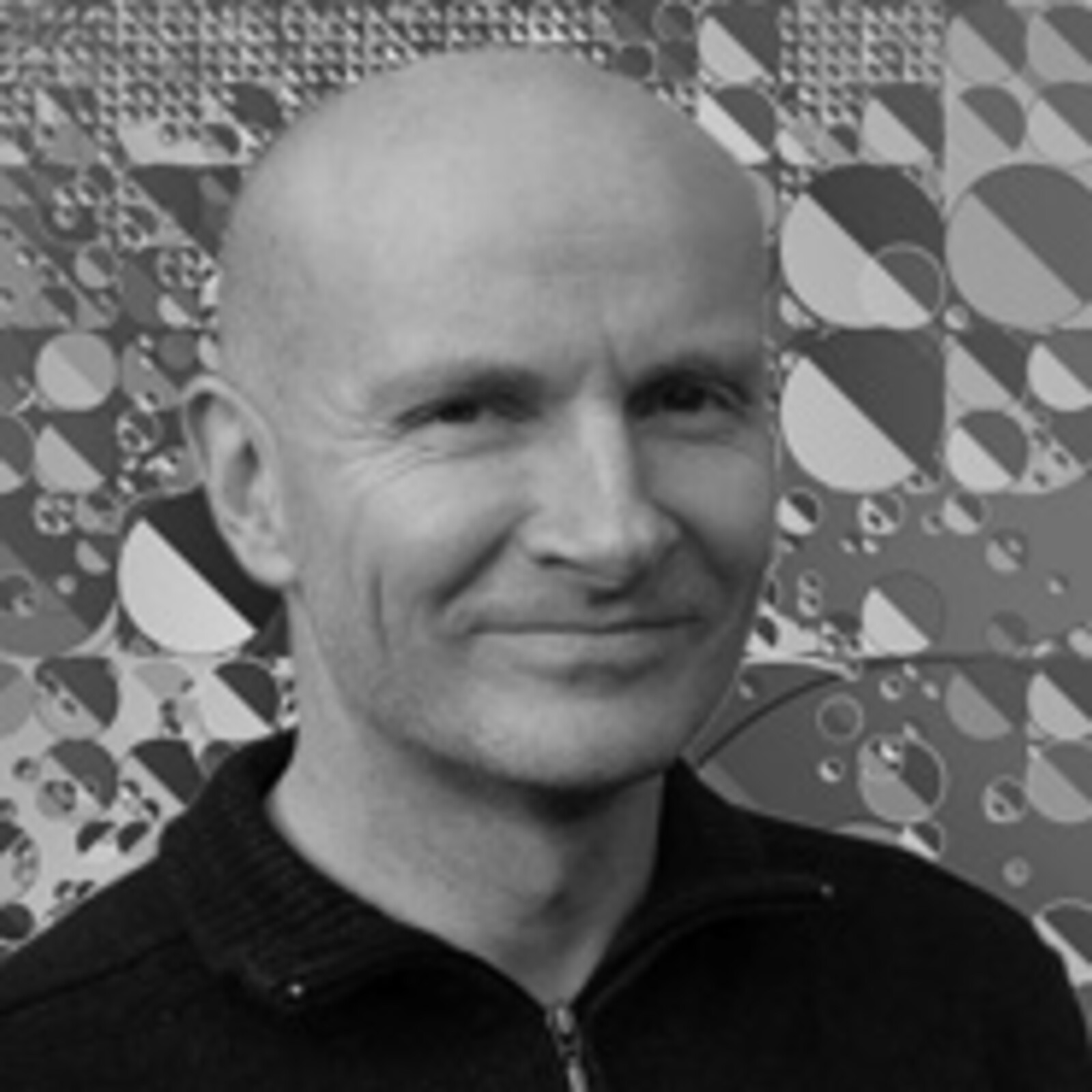
Extremely sought-after for his art, which he has dubbed “e-art”, Holger Lippmann has been featured in numerous exhibitions. Born in 1960, he studied painting and sculpting in Dresden and… Read more
Intro Bio Exhibitions


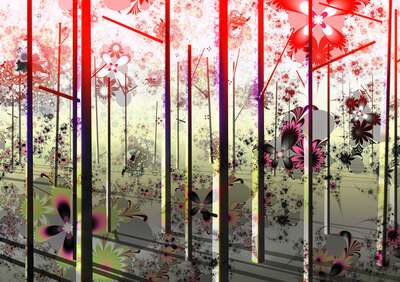

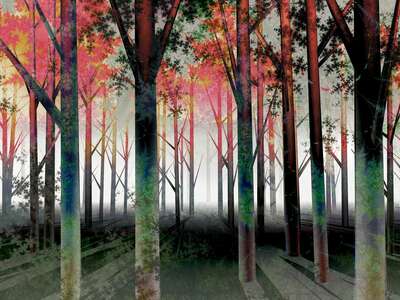

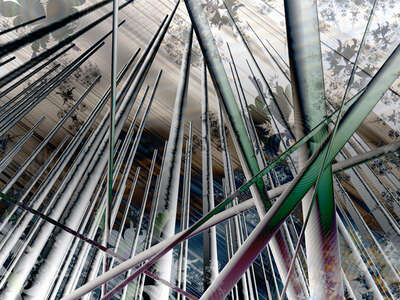

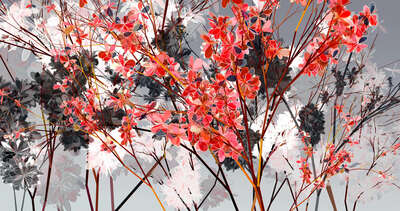

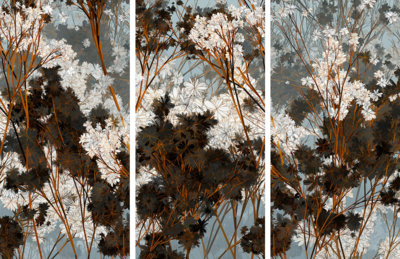

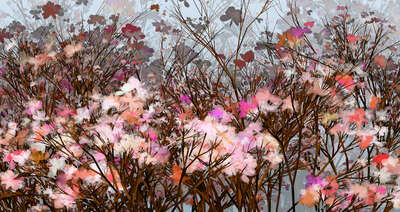



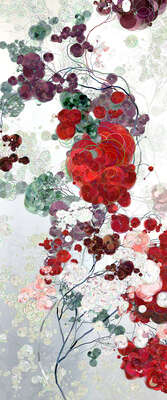

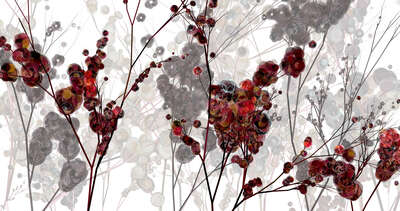

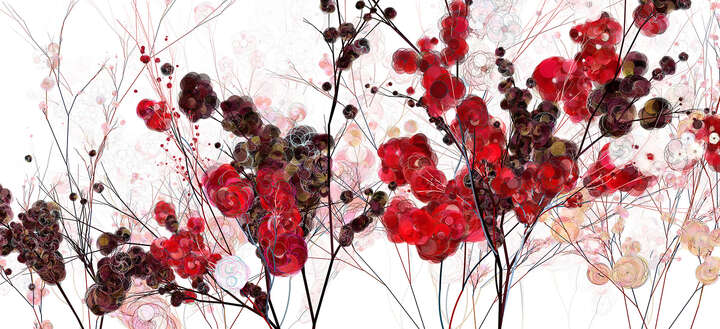
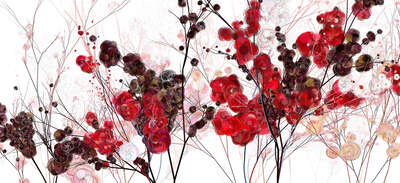
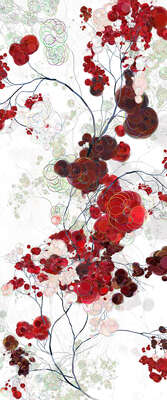



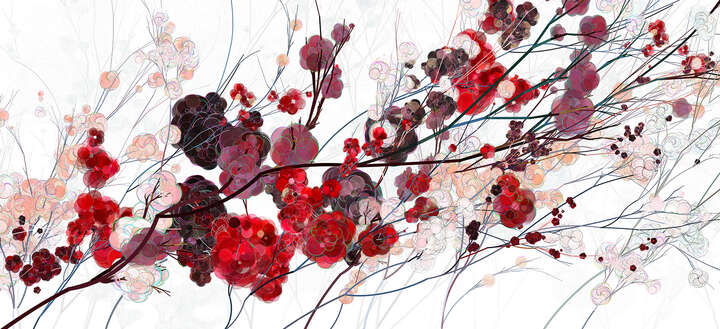
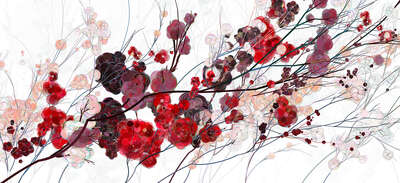
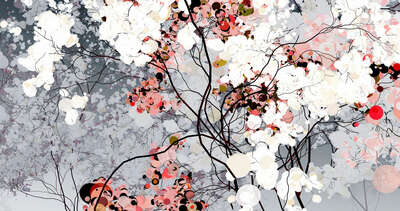


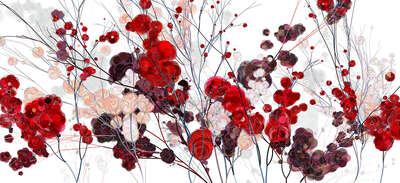






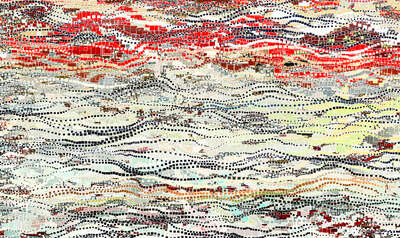

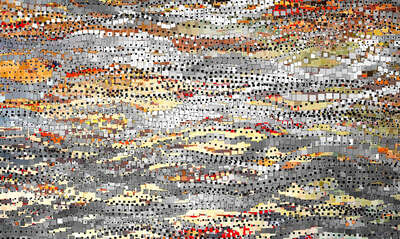





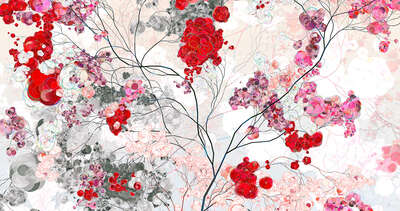

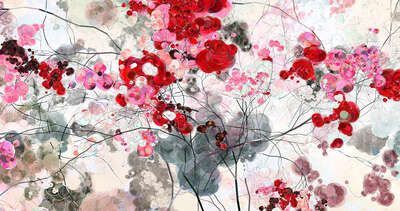

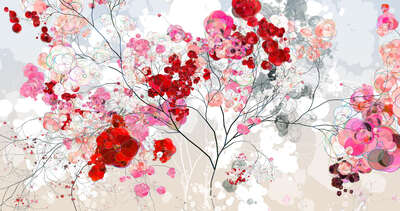



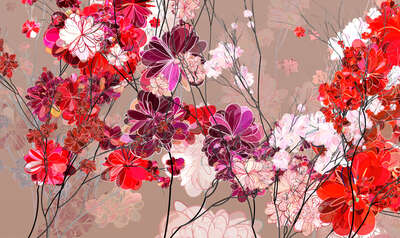

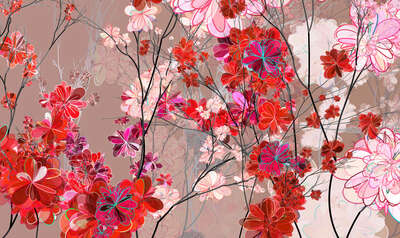



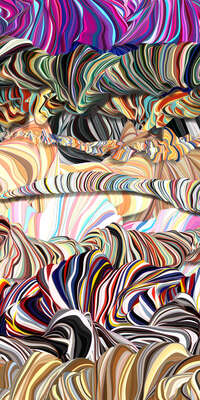

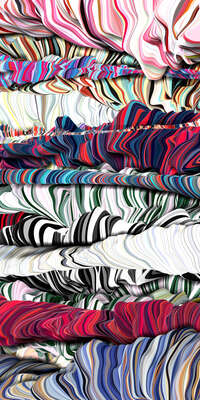

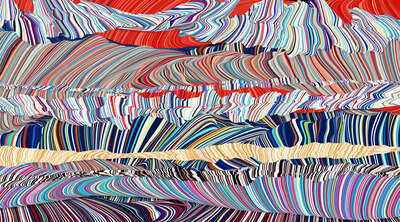

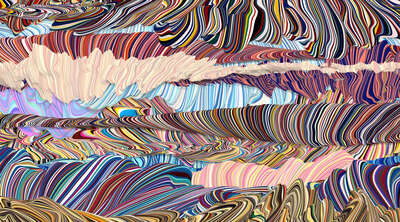

![Flow[R]Field III by Holger Lippmann](https://img-lumas.b-cdn.net/showimg_hli104_mobile.jpg)
![Flow[R]Field III by Holger Lippmann](https://img-lumas.b-cdn.net/showimg_hli104_mobile.jpg)
![Flow[R]Field II by Holger Lippmann](https://img-lumas.b-cdn.net/showimg_hli101_mobile.jpg)
![Flow[R]Field II by Holger Lippmann](https://img-lumas.b-cdn.net/showimg_hli101_mobile.jpg)


Extremely sought-after for his art, which he has dubbed “e-art”, Holger Lippmann has been featured in numerous exhibitions. Born in 1960, he studied painting and sculpting in Dresden and Stuttgart, before moving on to develop his own computer drawing software. Lippmann’s images range from representational subjects like flowers to geometric figures to superimposed matrix structures. Although essentially abstract, Lippmann’s work is always connected to the concrete.
Lentikular / Imaginal Disk
The starting point of Holger Lippmann’s algorithm-based lenticular work is a regular color board. Through a creative digital process, he transforms it into an art work that appears as a vibrating color wheel. The program’s process control analyzes different phases of the color wheel and breaks them down into smaller rhythmic geometric structures. The numerous mini prisms on the surface of the image’s material creates a new finely detailed color image depending on the viewing angle, adding an infinite element to the artwork through an ever-changing visual expression. It gives the impression of a color wheel rotating around its own hidden center of imagination.
Flow[R]Field
The images in the "Flow[R]Field" series, with their vertically emphasized narrow format and soft color palette, are distinctly reminiscent of Japanese woodblock prints. They open a fresh perspective on the duality of representational form and digital aesthetic abstraction. On the one hand, we see virtually blooming flower fields that a creative algorithm has sown onto the canvas and delicately nurtured. On the other hand, within these artificial blossoms, stems, and field furrows, we recognize stylistically reduced, pure geometric shapes, lines, and structures which strive for maximum abstraction. This way, the Flow[R]Fields are always both painterly generative representations and digitally abstract originals.
Uncertain Layering
The ridges of color sediment in the image pile up like powerful layers of earth, forming compelling waves of vibration within the artwork. Holger Lippmann generates extraordinary and psychedelic-experimental textures for his color landscapes, starting from the famous Perlin-Noise algorithm for which the inventor and Tron animator Ken Perlin once received an Oscar. This rhythmic burst of colors recalls the pulsating effects of Op-Art while the iterative distortions are appearing utterly harmonious. Spatial curvatures, delicate linear narrowing, and stacked, massaged color folds create distinctive abstract landscapes, each of them highly active and sensually captivating in their coloring.
NFT in a Box
To see Holger Lippmann’s digital artworks in motion is to discover entirely new dimensions. The already varied and graphically detailed texture is joined by dynamic wavelike movements, sudden changes in colour and subtle geometric modulations that give his works an entirely new and unexpected look in both time and space. The paintings feel as if they have been called into being with the snap of a finger and now follow a secret logarithmic consciousness that in turn is powered by a generatively pulsating turbine.
Distant similarities to the world of objects come to the fore: in one work, we encounter the green expanse of an abstract landscape of machine-like rotational prose. In another, we observe the rotation of an abstract, melodic colour piano. A third work, too, transcends pure abstraction and culminates in figurative associations. We see the steady flow of a delicate system of lines whose changing colour contrasts seem to mirror the palettes of impressionist painting. What makes all these dynamic images unique is that, compared to their carefully arranged static predecessors, they develop a dynamic element that blows like a fresh breeze through the geometric textures, bringing a sense of verve to the old order.
Stephan Reisner
Rose Cherry
In Japanese culture, cherry blossoms embody beauty, awakening, and transience. Their symbolic power is clearly expressed in Holger Lippmann’s digital work. From soft pinks to deep reds, Lippmann creates a sea of cherry blossoms in a wave of colour, celebrating his own hanami through his images.
And like the hanami, the traditional Japanese cherry blossom festival, Lippmann’s work inspires joyful and melancholic emotions at the same time. The digital artist stylistically and graphically reinterprets the cherry blossoms. A classically trained painter, he has traded his physical drawing implements for computer programs.
Recursive Trees
In his Recursive Trees series, Holger Lippmann uses digital means to capture the magic of blooming cherry blossom trees. In contrast to Rose Cherry, the depicted blossoms feel more powerful than delicate and playful. The branches give the images structure and weight. The extraordinary composition in Lippmann’s pieces quotes from traditional Japanese painting, impressively illustrating how captivating and emotional Japan can be during cherry blossom season.
Language of Landscape
Humans allegedly began creating the first mosaics 400,000 years ago. As one of the most advanced digital artists of our times, Holger Lippmann knows how to implement this ancient technique in a very special way. In his Language of Landscape series, he creates extremely modern masterpieces with inlaid landscapes in which the valleys, hills, and villages can only be recognised at a distance. It is clear that his creations originate on the computer.
The angular building blocks that make up the image are reminiscent of pixels, colourful pieces arranged into patterns. With their help, Lippmann creates aesthetic worlds that seem both abstract and full of life. Lippmann’s work falls somewhere in between artistic disassociation and realistic reproduction, between old values and modern perspectives.
La Forêt
These woods give off a thrilling air of mystery. Although they are clearly recognisable for what they are, the trees have little in common with reality. They indicate a future perfection we cannot even imagine yet. Holger Lippmann’s images in the La Forêt series settle somewhere between nature and virtual reality.
The futuristic tree trunks, the perplexing colours, the mystical light, the bold shadows, and the floral patterns come together in these extraordinary compositions. The series La Forêt evokes a whole range of emotions: fascination, curiosity, and also a slight fear of the unknown. The familiar seems strange while the foreign seems familiar. It appears nearly impossible to tear yourself away from this vision of another world.
Crimson and Scarlet
From a distance, the floral worlds in Holger Lippman’s Crimson and Scarlet series appear like a digitized natural spectacle. Upon closer inspection, the finer details become clear. Curving branches flow through the entire artwork like life-giving veins. Between them, crimson and scarlet flowers blossom in front of a soft, mauve background. While the interplay between the colors is already captivating enough, there is another layer to discover in that Lippman has outlined every single petal with his virtual brush. The blossoms in the foreground have contours in powerful white and red hues, in the middle there are individual petals with contrasting shades like sky blue, turquoise, and neon green. The artist lets the color accents in the background quietly fade away.
TECHNIQUE
Digital or Computer-Aided Painting
When trained painter Holger Lippmann picks up a brush, he feels as though something is missing: the abundance of possibilities he can almost instantaneously run through using his computer program. And if, among them, Lippmann does not find an idea worth developing, he can always simply go back to square one. This is a creative luxury of his own design.
Holger Lippmann developed the computer drawing programs for his own work. With them, he composes delicate structures and abstract geometrical patterns he can layer and vary. The LUMAS pieces are based on a special program, in which the artist set a range of parameters to regulate the scattering of the geometrical elements. Lippmann then unites different compositions made in this way into cohesive pieces. “My internal process is the same as it was when I was working with paint and canvas,” Lippmann explains. “That’s why I call my current work digital or computer-aided painting.”
Like music, my work is born of improvisation.
Holger Lippmann
| 1960 | born in Mittweida, Germany |
| 1985-90 | Graduated in Fine Arts - Sculpture at the Art Academy, Dresden |
| 1990-92 | Student of the master class of Professor Klaus Schwabe, Art Academy, Dresden |
| 1991 | Scholarship of Baden-Wuerttemberg/ Germany, post-graduate at the Art Academy, Stuttgart |
| Scholarship at Institut des Hautes Etudes en ArtsPlastiques, Paris, with Pontus Hulten, Daniel Buren, Sarkis | |
| 1992 | Internship at the Institute of Technology, New York / Department of Computer Art |
| 1992-94 | lives in Brooklyn, New York |
| 1997-98 | Post-graduate in Multimedia Education at CIMdata, Berlin |
| lives and works in Wandlitz, Germany |
| 2002 | POPULAR, Animations 4 electronic music, Karlsruhe, Germany |
| Bildercodes, International media art award | |
| 1997 | CD-ROM Preis, Cynet art, Dresden, Germany |
| Single Exhibitions | |
| 2011 | Poetic justice & digital rights, gallery Wolkenbank, Rostock, Germany |
| 2009 | Algebra Azalea Studio, Schauplatz Second Life |
| 2008 | Take These Flowers, gallery Kasten, projectspace 4, Mannheim, Germany |
| 2007 | Matter of substraction, media ruimte bruxelles, Brussels, Belgium |
| Meta Refresh, DAM Berlin, Germany | |
| 2005 | Run into flowers, DAM Berlin, Germany |
| 2004 | Minimal garden, DAM Berlin, Germany |
| 2003 | In images we trust, gallery Silberblau, Berlin, Germany |
| 2001 | Digitale Tapeten, Art Forum, Berlin, Germany |
| 1999 | Neo geometrische Kunst, Art Basel Media Art, gallery Gebr. Lehmann, Basel, Switzerland |
| 1993 | Sentimentalismo, gallery Gebr. Lehmann, Dresden, Germany |
| Grüß Gott, Galerie Ingrid Haar, Mönchengladbach, Germany | |
| 1992 | Fern - Seh - Raum, gallery Autogen, Dresden, Germany |
| Mathematik und Melancholie, gallery Ingrid Haar, Moenchengladbach, Germany | |
| 1991 | Sans Titre, gallery Gebr. Lehmann, Dresden, Germany |
| 1989 | B.S.I.G, gallery Gebr. Lehmann, Dresden, Germany |
| Group Exhibitions | |
| 2011 | B/w borderline galleria espoonsilta, Espoo, Helsinki, Finland |
| Just printed, gallery module2, Dresden, Germany | |
| Menschenbilder "Grosse Kunstschau Worpswede", Germany | |
| Leistungsschau, Kunsthalle Berlin, Germany | |
| Der Lauf Der Dinge, long night of videoart, Galerie Ruhnke, Potsdam, Germany | |
| 2010 | Ohne uns! Art & alternative culture in Dresden before und after ‘89, Dresden, Germany |
| 2009 | Dasistmeinsunddasistdeins, gallery Wolkenbank, Rostock, Germany |
| 2008 | Masterplan, Abel Neue Kunst, Berlin, Germany |
| Kunstinvasion, Kunsthalle Berlin, Germany | |
| Beyond the screen, DAM Berlin, Germany | |
| File, electronic languge international festival, Porto Alegre, Brasil | |
Share, Manufacturing, Festival of art and digital culture, Torino, Italy | |
| 2007 | Achtung Sprengarbeiten, NGBK Berlin, Germany |
| 2006 | Flowers, flowers in contemporary art, H. Voigt gallery, Kunstmuseum Heidenheim, Germany |
Out of disaster, Brotfabrik Berlin, Germany | |
Toronto Project, Goetheinstitut Toronto, Canada | |
| 2005 | Total kaputt, ABEL neue Kunst, Berlin, Germany |
| 2004 | TRIPTYQUE, Abbaye du Ronceray, Angers, France |
| Glue Präsentiert, Galerie Glue Berlin, Germany | |
| Du und dein garten, Kunsthaus Erfurt, Germany | |
| 2002 | Werkzeuge und Einheiten, Berlin Frankfurter Allee 3, Germany |
| 2000 | A ourssm, Kunst Akademie, Dresden, Germany |
| 1999 | DID, das kollektive ICH, Kunst Akademie, Dresden, Germany |
| 1998 | ACHSE3zu01, Kunst Akademie, Dresden, Germany |
| Sächsische Kunstausstellung, Schloss Dresden, Germany | |
| 1994 | Kunst in Deutschland, Bonn, Germany |
| 1992 | Export import, Gallery Ränitzgasse, Dresden, Germany |
| Vier II, Leonhardi Museum, Dresden, Germany | |
| 1991 | Vom Balkon Europas, gallery Gebr. Lehmann, Dresden, Germany |
| 2007-2008 | 14.11. - 11.01., URBAN TRANSIENCE, Goethe Institut Rotterdam (NL) |
| 2007 | 19.10. - 02.12., Achtung Sprengarbeiten, NGBK Berlin |
| 14.09. - 20.10., URBAN TRANSIENCE, ABEL neue Kunst |
Visit LUMAS USA!
Delivery to your country is not possible from this site.
If you would like to place an order, please visit LUMAS USA.